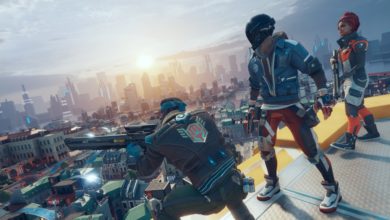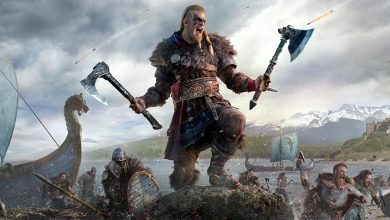![]() While most shooters these days tend to drift towards gritty realism, id Software and Raven still believe there is a place for the classic FPS, where realism takes a backseat to good old running and gunning. Games where you just want to shoot tons of bad guys with big bad guns and not worry about hiding behind cover or lining up that perfect headshot. Wolfenstein is just that. Contrary to what the title suggests, the game is not a remake of the classic Wolfenstein 3D, but a direct sequel to 2001’s hit Return to Castle Wolfenstein and, for the most part, it manages to retain the fun factor and the over-the-top setting of the series. It isn’t exactly an instant classic, but it surely is a refreshingly fun experience.
While most shooters these days tend to drift towards gritty realism, id Software and Raven still believe there is a place for the classic FPS, where realism takes a backseat to good old running and gunning. Games where you just want to shoot tons of bad guys with big bad guns and not worry about hiding behind cover or lining up that perfect headshot. Wolfenstein is just that. Contrary to what the title suggests, the game is not a remake of the classic Wolfenstein 3D, but a direct sequel to 2001’s hit Return to Castle Wolfenstein and, for the most part, it manages to retain the fun factor and the over-the-top setting of the series. It isn’t exactly an instant classic, but it surely is a refreshingly fun experience.
[singlepic id=1355 w=450 float=center]
As in the previous games, you play as the All-American hero William “B.J.” Blaskowicz (Yes, I can hear you kids laughing in the back row), who is once again out to kick some more Nazi butt, if he hasn’t done enough of that already. The story begins with B.J. discovering some kind of ancient magical artifact on board a Nazi ship. From here on, you follow him to the fictional town of Isenstadt, which is under attack by the Nazis. Soon he joins forces with the local Resistance factions in order to find out what the Nazis are up to. Obviously, they are up to no good and once again dabbling with the occult, trying to access some sort of alternate dimension called the Black Sun and causing all sorts of supernatural anomalies in the process. The plot is your typical B-movie shlock and is suitably cheesy but never feels overdone or out of place. It’s clear that the game doesn’t want to take itself too seriously as far as the plot goes, which makes it rather enjoyable. There are a couple of twists and turns along the way but nothing that isn’t quite predictable.
While the game follows a very traditional first person shooter design, it’s structured more like Starbreeze’s Chronicles of Riddick: Escape from Butcher Bay or The Darkness, which means it’s not an entirely linear game. The entire town of Isenstadt is open for you to explore and you can choose to do missions in the order you like. However you will rarely have more than two active missions at a time. A very handy and well-designed journal helps you to keep track of your missions, objectives and also provides a map of the town. It’s very difficult to get lost in the game thanks to the friendly compass, which always points to your next objective. The missions themselves are a set of mostly linear levels with usually a single path to your destination. However, no mission lasts for more than 15 to 30 minutes, which prevents them from feeling monotonous. Just when tedium starts to set in, the game throws in a spectacular set piece or a fun boss fight. Missions are set in a variety of different areas, from underground excavation sites and farms to creepy hospitals and museums. The pacing is just right and going back to the town and visiting the resistance hideouts and black markets feels like a welcome break from all the shooting, explosions and swastikas.
[singlepic id=1356 w=450 float=center]
Speaking of shooting, what would an FPS be without its core mechanic? Thankfully, the shooting here feels tight as ever. Pretty much all the guns you’ll get feel weighty and sound appropriately loud and punchy when fired. You’ll get your hands on the standard WW2-era guns such as the ubiquitous MP40 sub-machine gun, a Kar98 bolt-action rifle and the very effective MP43 assault rifle along with some experimental sci-fi weaponry such as a devastating Particle gun and a Lightning gun capable of shooting out electrical arcs at multiple enemies. And yes, you can carry all guns at all times. Every gun can be upgraded at a black market by spending gold found lying around the levels. These upgrades are really worth spending the gold as you’ll end up making them twice as effective as their default versions. Fully upgrading the Kar98 rifle, for example, lets you blow heads and limbs clean off enemies. Adding scopes to rifles is also pretty handy since quite a lot of firefights take place over long distances. However, most of these upgrades come at a high price so actively searching for gold soon becomes necessary.
These days it’s almost mandatory for all shooters to have some sort of fancy gimmick in addition to conventional weaponry. Wolfenstein is no different in that respect. The fancy artifact B.J. finds at the beginning of the game isn’t just for show. When activated, it allows you to enter an alternate dimension called “The Veil”. Activating the Veil lets you see doors that are otherwise inaccessible, locate secrets and highlight enemies. As you progress through the game, you’ll unlock additional upgradable Veil powers which allow you to slow down time, amplify damage or create a shield that can deflect bullets back at enemies. As expected, the Veil powers are also essential to solve puzzles and locate weak points in certain enemies.
[singlepic id=1357 w=450 float=center]
There is a nice variety in the enemies you get to fight. Most of the time, you’ll be fighting standard Nazi soldiers supported by magic-using operatives. But as you go on, you’ll meet new enemy types such as the heavily armoured Particle-gun wielding troopers, flying Nazis with jetpacks, stealthy invisible assassins (who look a lot like Kroenen from Hellboy) and also leather-clad femme fatales who can perform deadly melee attacks. The game also throws in a number of boss fights which are easily the best parts of the game. These fights are genuinely fun and are cleverly designed.
Next page: Graphics, multiplayer and final verdict



